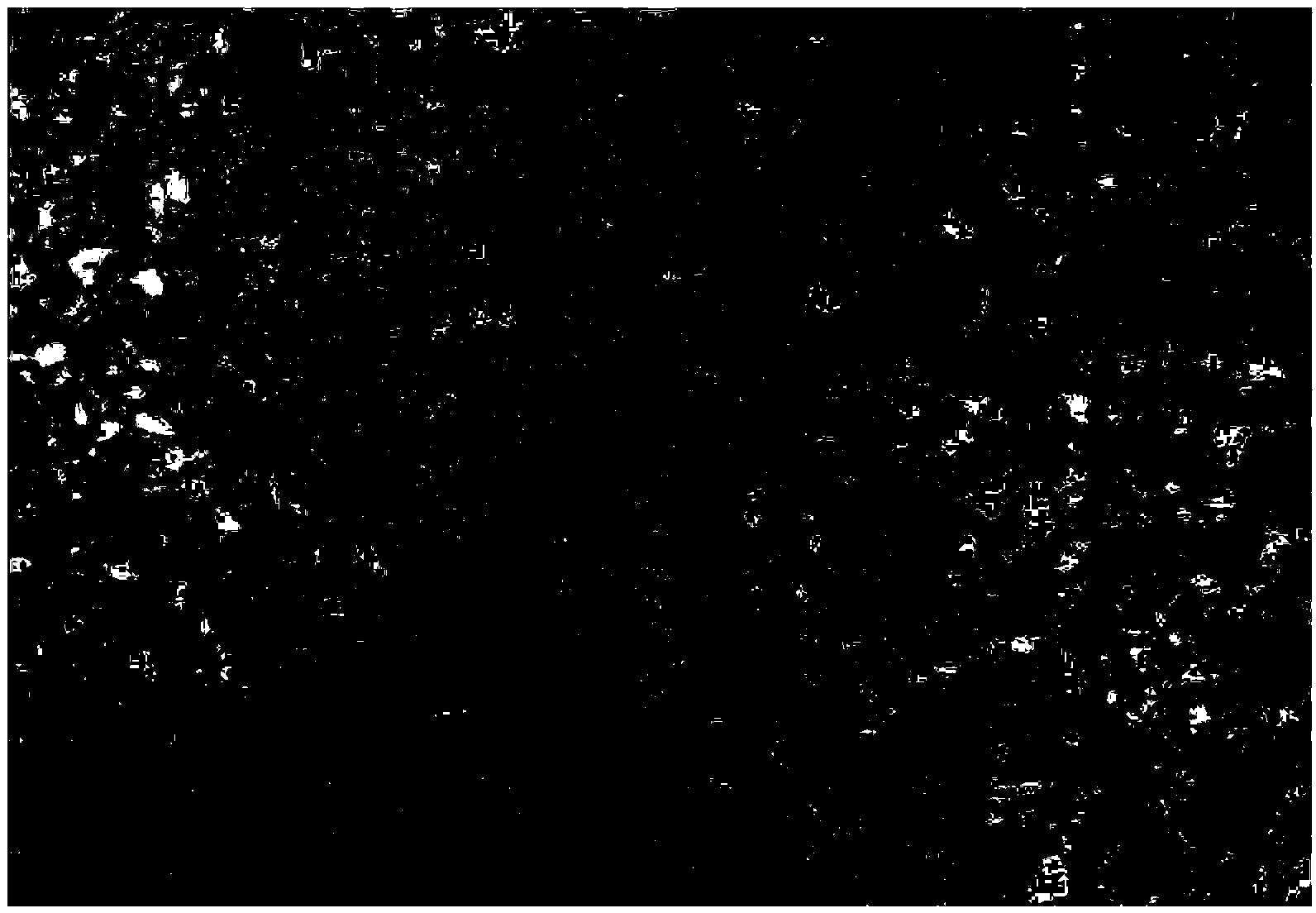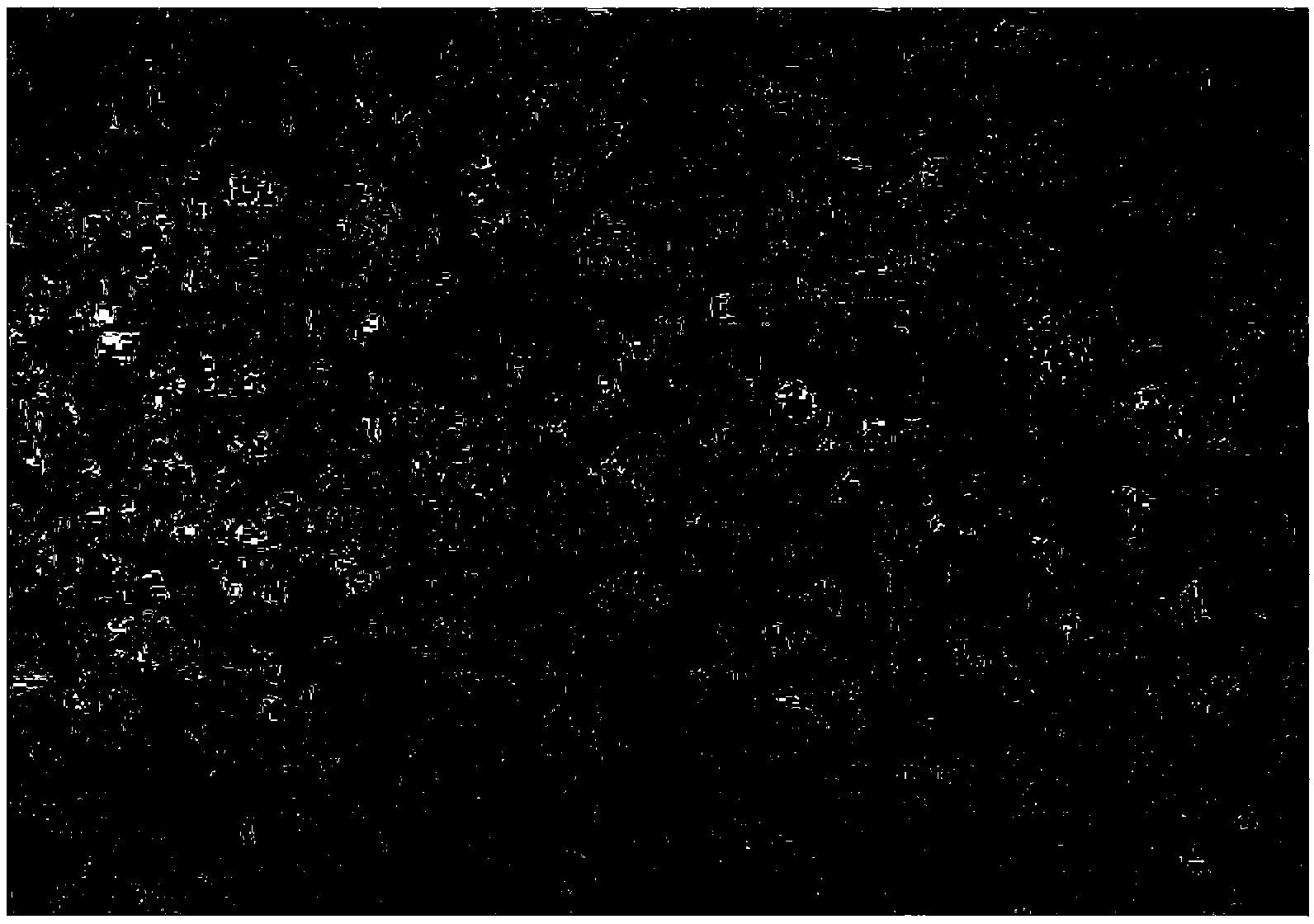Low-temperature high-toughness V-N alloyed ship plate steel and manufacturing method thereof
A manufacturing method and high-toughness technology, which is applied in the production field of low-temperature high-toughness V-N alloyed ship plate steel, can solve problems such as low low-temperature impact toughness, failure to meet demand, and low tensile strength, so as to reduce carbon content and increase profits Space, the effect of improving welding performance
- Summary
- Abstract
- Description
- Claims
- Application Information
AI Technical Summary
Problems solved by technology
Method used
Image
Examples
Embodiment 1
[0037] Example 1: The composition of the ship plate steel shown in Table 1 was smelted in a 200 kg vacuum induction melting furnace. During the smelting process, after the refining is completed, nitrogen gas is introduced into the vacuum smelting furnace, and the nitrogen pressure is controlled at 450Pa. The molten steel was cast into an 80Kg ingot. The ingot was placed in a high-temperature resistance furnace, heated to 1150°C, kept for 1.5h, and rolled into a steel plate with a thickness of 20mm in 5 passes on an experimental rolling mill, with a total reduction rate of 85% and a rolling temperature of 1050°C. Then it is controlled and cooled, the cooling temperature is 850°C, and the reddening temperature is 570°C. The metallographic structure of the steel plate is figure 1 shown.
[0038] The obtained steel plate was subjected to mechanical testing, and its mechanical properties are shown in Table 2.
Embodiment 2
[0039]Example 2: The composition of the ship plate steel shown in Table 1 was smelted in a 200 kg vacuum induction melting furnace. During the smelting process, after the refining is completed, nitrogen gas is introduced into the vacuum smelting furnace, and the nitrogen pressure is controlled at 440Pa. The molten steel was cast into an 80Kg ingot. The ingot was placed in a high-temperature resistance furnace, heated to 1200 °C, kept for 1 h, and rolled into a steel plate with a thickness of 15 mm in 6 passes on an experimental rolling mill, with a total reduction rate of 90% and a rolling temperature of 1130 °C. Then it is controlled and cooled, the cooling temperature is 900°C, and the reddening temperature is 710°C. The metallographic structure of the steel plate is figure 2 shown.
[0040] The obtained steel plate was subjected to mechanical testing, and its mechanical properties are shown in Table 2.
Embodiment 3
[0041] Example 3: The composition of the ship plate steel shown in Table 1 was smelted in a 200 kg vacuum induction melting furnace. During the smelting process, after the refining is completed, nitrogen gas is introduced into the vacuum smelting furnace, and the nitrogen pressure is controlled at 455Pa. The molten steel was cast into an 80Kg ingot. The ingot was placed in a high-temperature resistance furnace, heated to 1200°C, kept for 2.5h, and rolled into a steel plate with a thickness of 20mm in 5 passes on an experimental rolling mill, with a total reduction rate of 85% and a rolling temperature of 1065°C. Then it is controlled and cooled, and the cooling temperature is 865°C, and the reddening temperature is 700°C. The metallographic structure of the steel plate is image 3 shown.
[0042] The obtained steel plate was subjected to mechanical testing, and its mechanical properties are shown in Table 2.
PUM
| Property | Measurement | Unit |
|---|---|---|
| yield strength | aaaaa | aaaaa |
Abstract
Description
Claims
Application Information
 Login to View More
Login to View More - R&D Engineer
- R&D Manager
- IP Professional
- Industry Leading Data Capabilities
- Powerful AI technology
- Patent DNA Extraction
Browse by: Latest US Patents, China's latest patents, Technical Efficacy Thesaurus, Application Domain, Technology Topic, Popular Technical Reports.
© 2024 PatSnap. All rights reserved.Legal|Privacy policy|Modern Slavery Act Transparency Statement|Sitemap|About US| Contact US: help@patsnap.com










